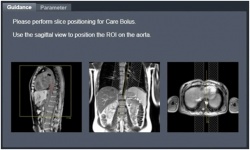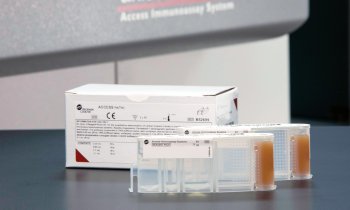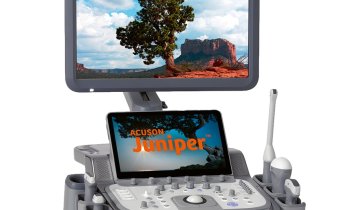Improving clinical workflow in a university department
MR-imaging with day optimising throughput (DOT) technology
At Mannheim University Medical Centre five MR units are currently installed - the Magnetom Tim Trio, 2 x Magnetom Avanto, Magnetom Sonata and the new Magnetom Skyra, which was presented at the RSNA 2009 and is equipped with completely new software.


The main advantages of this software are the ‘DOT’ (day optimising throughput) engines, designed to assist technicians to perform various examinations. The DOT engines provide pre-designed workflows with visual guidance and comprehensive protocol adaption to facilitate and speed up exams on the one hand and, on the other, to minimise user interference.
For example, whereas in former software versions all slice positions had to be positioned manually, or at least had to be copied from another sequence, the new software e.g. automatically positions all axial or coronal sequences the same way. Moreover, there are auto-positioning algorithms for certain exams, e.g. brain, which propose a start slice position that only needs minor correction, if at all.
A main advantage of the DOT engines is an outstanding new feature, the guidance window. This contains multiple assistance tools to lead the technician through an exam. One example is the presentation of typical screenshots of a standard exam of the region of interest. For instance, these screenshots show the correct slab position for localisers and sequences, or contain short notes and hints for the technician to perform the exam correctly (Fig. 1). This guidance is of particular value for complex exams, e.g. cardiac, which can often only be performed by a small number of experienced technicians. With the new guidance window, even inexperienced technicians can perform a technically correct and diagnostic cardiac exam by simply following the instructions in the guidance window. Moreover, planning those complex exams is possible by a few mouse clicks on designated landmarks in a localiser (Fig. 2). The slices will be calculated automatically afterwards.
Another feature is the possibility of planning dynamic contrast series (p.e. VIBE tra pre-contrast, arterial, venous and delayed) entirely in advance, as shown in Fig. 3, including patient adapted breath-hold duration to minimise the risk of an inaccurate examination. A further pivotal feature is the implementation of different exam strategies (Fig. 4), depending on the type of exam that has to be performed, or the patients´ capabilities. By choosing one of the strategy options, e.g. a head exam, one can easily change the strategy of a standard brain exam to a non-motion-sensitive exam, if the patient is agitated. This change in strategy can even be done during the exam; all following sequences will automatically be changed in non-motion sensitive sequences (p.e. BLADE T2, FLAIR and DWI). A side feature is the variable check boxes implemented in the DOT workflows, depending on the scan region and the clinical question, for example a SWI for brain haemorrhage, or post-contrast sequences in a brain exam. If the checkboxes are selected, these sequences will be automatically appended to the queue.
By using DOT-engine guided workflows in clinical routine two major issues are addressed:
With the help of the guidance window even less experienced technicians can perform virtually all kinds of exams whereas, with an older software platform, complex exams can only be performed by specially trained technicians. This allows us to deploy the technicians more flexibly in our department.
In addition, with the new software it is possible to increase productivity for several reasons. Firstly, as the scanner can perform an exam semi-automatically by executing breath-hold commands and contrast injection (in upcoming software versions) without manual interaction, the technician has a chance to do administrative work or prepare the next patient. Secondly, complex exams are much easier and faster to perform. For example, with conventional software, planning the slice positions in a cardiac exam is protracted and complex, whereas the slice calculation in the DOT engine is accomplished only by locating five landmarks. This reduces the time for planning a cardiac exam by several minutes for each patient. Thus, the daily throughput can be increased. Moreover, image quality is improved, as the exams are partly standardised due to the guidance and the possibility of changing the strategy if the patient is agitated or the clinical question changes while the patient is being scanned.
Conclusion: The new DOT workflow engine is a powerful tool in clinical routine, enabling all technicians to perform even complex exams without a loss of examination quality with a concurrently increased clinical throughput due to a semi-automated and simplified examination technique.
Further details:
www.teleradiologie-rnd.de
www.ikrn-mannheim.de
Contact: Kai Lederle MD
kai.lederle@medma.uni-heidelberg.de
Phone: +49-621-383-1409
Fax: +49-621-383-1457
07.03.2010











